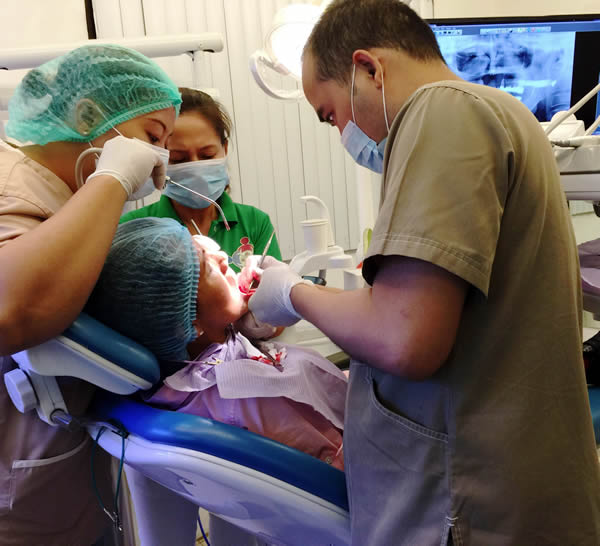Oral Surgery
Platelet-rich fibrin
 Platelet-rich fibrin (PRF) or leucocyte- and platelet-rich fibrin (L-PRF) is a second generation PRP where autologous platelets and leucocytes are present in a complex fibrin matrix to accelerate the healing of soft and hard tissue and is used as a tissue-engineering scaffold for endodontics.
Platelet-rich fibrin (PRF) or leucocyte- and platelet-rich fibrin (L-PRF) is a second generation PRP where autologous platelets and leucocytes are present in a complex fibrin matrix to accelerate the healing of soft and hard tissue and is used as a tissue-engineering scaffold for endodontics.
Platelet Rich Fibrin is a by-product of blood that is exceptionally rich in platelets. PRF has long been used in hospitals to accelerate the body’s own healing process, but it is only fairly recently that advances in technology have allowed this same technique to be used in the dental office.
The blood platelets perform several essential functions in the body, including blood clot formation and the release of growth factors that help to heal wounds. These growth factors stimulate the stem cells to produce new host tissue as quickly as possible, which is why platelet rich fibrin is so effective in the post-treatment healing process.
Bone Repair – PRF can be used in facial trauma reconstruction, repairing of defects due to tooth removal, or the removal of growths and cysts.
Fistula Repair – This includes the repair of fistulas between the mouth and the sinus cavity.
Reasons for platelet rich fibrin treatment
Platelet rich fibrin application is now widely used to expedite the post-procedure healing process and is completely safe. Since the blood used will come from the patient’s own body, disease transmission is not a factor. Almost all patients report a much greater degree of comfort immediately after their procedure. There are also several more distinct advantages of PRF:
Lower Infection Risk – PRF is secured on the wound after the procedure by the dentist and actually seals the wound away from infectious agents, lowering the risk of problems.
Accelerated Healing – The saturation of the wound with PRF helps increase tissue synthesis due to its growth factors, and this in turn results in faster tissue regeneration. Speedier healing decreases the risk of later infections, complications, and discomfort.
Safety and Convenience – Disease transmission is non-issue since the blood is harvested from the patient’s own blood supply. The amount of blood needed is small and can be collected during a routine outpatient procedure.
Bone Grafting For Implants
It is not unusual for the patient to present for a consultation at the oral surgeon’s office and be informed at some point in the discussion that he or she may require a “bone graft” in order to maximize the outcome of dental implant surgery. While this sounds pretty scary at first, the truth is that bone grafting in the oral cavity today is a routine, predictable and painless procedure.
When bone grafting is required
If your jawbone isn’t thick enough or is too soft, you may need bone grafting before you can have dental implant surgery. That’s because the powerful chewing action of your mouth exerts great pressure on your bone, and if it can’t support the implant, the surgery likely would fail. A bone graft can create a more solid base for the implant.






